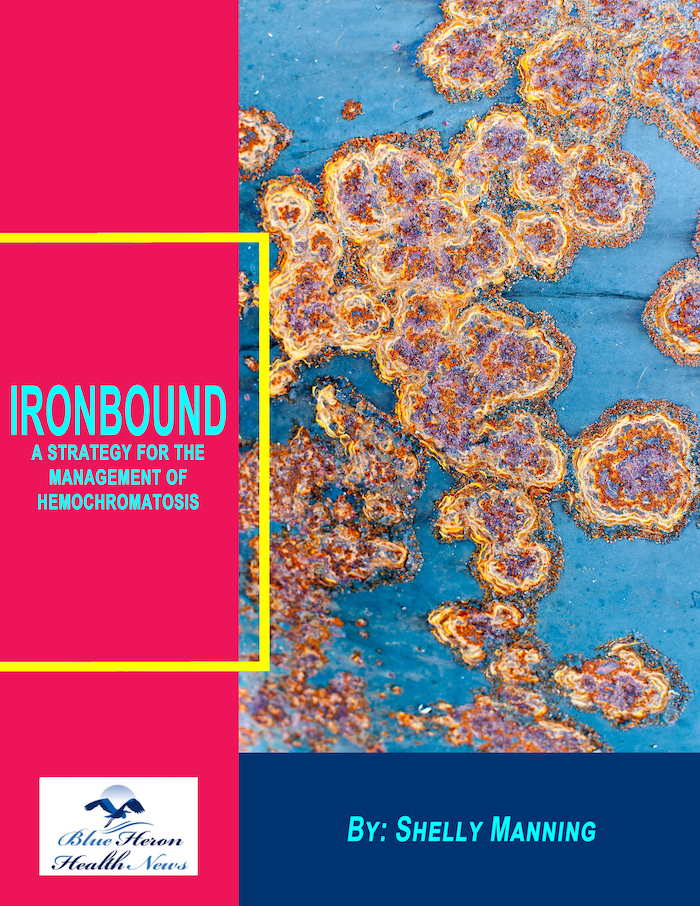
Ironbound™ A Strategy For The Management Of Hemochromatosis By Shelly Manning The 5 superfoods explained by Shelly Manning in this eBook play an important role in reducing the levels of HCT. The absorption of the excessive amount of iron by the genes of HCT can be blocked by these superfoods. In this way, the information provided in this eBook can help in resolving the problem of excess iron in your body naturally without any risk of side effects.
What is hemochromatosis?
Comprehensive Guide to Hemochromatosis
Hemochromatosis is a genetic disorder characterized by excessive absorption and accumulation of iron in the body. This condition can lead to iron overload, which can cause damage to various organs and tissues. Understanding the causes, symptoms, diagnosis, treatment, and management of hemochromatosis is crucial for effective care and prevention of complications.
1. Definition and Types of Hemochromatosis
1.1 Definition
- Hemochromatosis: A condition where the body absorbs and stores too much iron, leading to iron overload. Excess iron is deposited in organs such as the liver, heart, pancreas, and joints, potentially causing serious health issues.
1.2 Types of Hemochromatosis
- Hereditary Hemochromatosis (HH): The most common form, caused by genetic mutations. It is an inherited disorder typically involving mutations in the HFE gene.
- Secondary Hemochromatosis: Caused by other conditions or factors, such as multiple blood transfusions, chronic liver disease, or certain types of anemia (e.g., thalassemia).
- Juvenile Hemochromatosis: A rare, severe form that appears in childhood or adolescence.
- Neonatal Hemochromatosis: A rare condition in which iron builds up rapidly in a newborn’s liver and other tissues.
2. Causes and Risk Factors
2.1 Genetic Mutations
- HFE Gene Mutations: Mutations in the HFE gene, particularly C282Y and H63D, are the most common cause of hereditary hemochromatosis. These mutations lead to increased iron absorption from the diet.
2.2 Risk Factors
- Family History: A family history of hemochromatosis increases the risk.
- Ethnicity: People of Northern European descent, particularly those of Celtic origin, have a higher prevalence of hereditary hemochromatosis.
- Gender: Men are more likely to develop symptoms at a younger age than women, who may lose excess iron through menstruation and pregnancy.
3. Symptoms and Complications
3.1 Early Symptoms
- Fatigue: Chronic tiredness and weakness.
- Joint Pain: Particularly in the knuckles and joints of the hands.
- Abdominal Pain: Discomfort or pain in the abdomen.
- Loss of Libido: Decreased interest in sex.
3.2 Advanced Symptoms
- Skin Changes: Bronze or gray discoloration of the skin.
- Diabetes: Known as “bronze diabetes” due to iron deposition in the pancreas.
- Heart Problems: Arrhythmias, heart failure, or cardiomyopathy.
- Liver Disease: Enlarged liver (hepatomegaly), liver cirrhosis, or liver cancer.
- Endocrine Disorders: Hypothyroidism, hypogonadism.
- Arthritis: Particularly in the hands.
4. Diagnosis
4.1 Medical History and Physical Examination
- Family History: Assessing family history for hemochromatosis or related conditions.
- Physical Examination: Checking for signs of organ damage, skin discoloration, or joint abnormalities.
4.2 Blood Tests
- Serum Ferritin: Elevated levels indicate increased iron stores.
- Transferrin Saturation: Measures the percentage of transferrin (a protein that carries iron) that is saturated with iron. Levels above 45% may indicate iron overload.
- Liver Function Tests: Assessing liver function and damage.
4.3 Genetic Testing
- HFE Gene Testing: Identifying mutations in the HFE gene (C282Y and H63D) to confirm hereditary hemochromatosis.
4.4 Imaging and Biopsy
- MRI: Magnetic resonance imaging can assess iron accumulation in the liver and other organs.
- Liver Biopsy: A sample of liver tissue is examined to assess the extent of iron overload and liver damage.
5. Treatment and Management
5.1 Phlebotomy
- Regular Blood Removal: The primary treatment for hereditary hemochromatosis is phlebotomy (therapeutic blood donation). Removing blood reduces iron levels as the body uses stored iron to produce new red blood cells.
- Frequency: Initially, weekly phlebotomy may be required until iron levels normalize, followed by maintenance phlebotomy every few months.
5.2 Chelation Therapy
- Iron Chelators: For patients who cannot undergo phlebotomy, medications like deferoxamine, deferasirox, or deferiprone can bind to iron and help remove it from the body.
5.3 Dietary Management
- Limit Iron Intake: Avoiding iron-rich foods, supplements, and vitamin C supplements (which increase iron absorption).
- Avoid Alcohol: Reducing alcohol intake to prevent liver damage.
- Balanced Diet: Maintaining a healthy diet to support overall health without excessive iron.
5.4 Monitoring and Follow-Up
- Regular Monitoring: Frequent blood tests to monitor iron levels and organ function.
- Liver Surveillance: Regular imaging and tests to monitor for liver damage or cancer.
6. Complications and Their Management
6.1 Liver Disease
- Cirrhosis Management: Monitoring for liver cirrhosis and managing complications such as portal hypertension and liver cancer.
- Liver Transplant: In severe cases of liver failure, a liver transplant may be considered.
6.2 Diabetes Management
- Blood Sugar Control: Regular monitoring and management of blood glucose levels through diet, medication, and lifestyle changes.
6.3 Heart Disease Management
- Cardiac Monitoring: Regular monitoring of heart function and managing complications such as heart failure or arrhythmias.
6.4 Joint Pain Management
- Pain Relief: Using nonsteroidal anti-inflammatory drugs (NSAIDs) or other pain relievers to manage joint pain.
- Physical Therapy: Engaging in physical therapy to maintain joint mobility and function.
7. Prevention and Genetic Counseling
7.1 Genetic Counseling
- Family Planning: Genetic counseling for individuals with a family history of hemochromatosis to understand the risk of passing the condition to offspring.
- Screening: Screening for family members to identify those at risk and initiate early intervention.
7.2 Lifestyle Modifications
- Healthy Diet: Adopting a balanced diet low in iron and alcohol to prevent excessive iron accumulation.
- Regular Check-Ups: Routine medical check-ups to monitor health and detect any early signs of complications.
8. Research and Future Directions
8.1 Advances in Genetic Research
- Genetic Studies: Ongoing research to better understand the genetic basis of hemochromatosis and develop targeted therapies.
- New Genetic Mutations: Identifying other genetic mutations that may contribute to iron overload conditions.
8.2 Novel Therapies
- New Treatments: Developing new treatments to reduce iron overload more effectively and with fewer side effects.
- Gene Therapy: Exploring gene therapy options to correct the underlying genetic mutations causing hereditary hemochromatosis.
9. Conclusion
Hemochromatosis is a genetic disorder that leads to excessive iron absorption and storage, causing significant health issues if left untreated. Early diagnosis, effective treatment, and regular monitoring are essential to manage iron levels and prevent complications. By understanding the causes, symptoms, and treatment options for hemochromatosis, individuals and healthcare providers can work together to improve outcomes and quality of life for those affected by this condition. Ongoing research continues to enhance our understanding and treatment of hemochromatosis, offering hope for better management and prevention in the future.
Ironbound™ A Strategy For The Management Of Hemochromatosis By Shelly Manning The 5 superfoods explained by Shelly Manning in this eBook play an important role in reducing the levels of HCT. The absorption of the excessive amount of iron by the genes of HCT can be blocked by these superfoods. In this way, the information provided in this eBook can help in resolving the problem of excess iron in your body naturally without any risk of side effects.
